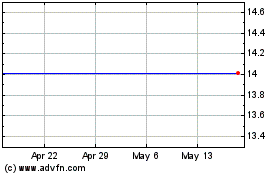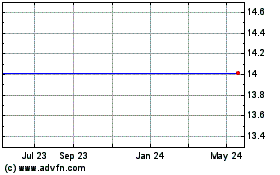New Study from Affymetrix Laboratories Points to Changing View of How Genome Works
March 24 2005 - 2:04PM
PR Newswire (US)
New Study from Affymetrix Laboratories Points to Changing View of
How Genome Works Any single base in genome can be transcribed into
many different RNA sequences, most of which never leave the nucleus
SANTA CLARA, Calif., March 24 /PRNewswire-FirstCall/ -- Scientists
at Affymetrix, Inc. (NASDAQ:AFFX) reported today in Science
magazine online that they have completed a high-resolution scan of
structure and function for nearly 30 percent of the human genome
sequence. In collaboration with the National Cancer Institute, the
research team used high-density GeneChip(R) microarrays to study
every fifth base, on average, of 10 human chromosomes; they found
that thousands of regions of the genome are transcribed into
overlapping RNA sequences and those sequences are separated by
regions in which RNA is transcribed more scarcely. All of the data
is freely available at
http://transcriptome.affymetrix.com/publication/transcriptome_10chromosomes
and http://cgap.nci.nih.gov/Info/2005.1 "The findings of this study
compel us to reconsider how the genome is organized and regulated,"
said Thomas Gingeras, Vice President for Biological Research at
Affymetrix and senior author of the Science manuscript. "These data
point us toward two critical and exciting questions: What are the
functions of these previously unannotated transcripts and what are
the regulation schemes that orchestrate such complex assemblies of
transcription? It seems certain that this is not the genome we
learned about while in school." In the "traditional" view of the
human genome, there are about 26,000 genes used to make proteins
that ultimately control the structure and function of every cell in
the body. Most disease research has focused on studying these
protein-coding genes, even though they make up only about two
percent of the human genome sequence. The new study by Gingeras'
team did not make any assumption of what parts of the genome might
or might not be important to human biology. They used new
Affymetrix tiling microarrays and unique biochemical tests to scan
the sequence of 10 human chromosomes -- one third of the human
genome sequence -- and found that roughly 15 percent of the DNA
sequence analyzed was transcribed; most sites of transcription were
not located in areas associated with protein-coding genes. The team
found many diverse kinds of RNAs transcribed from distinct regions
of the genome, creating a complex pool of overlapping
transcription. While the team validated many known protein-coding
transcripts that contribute to this complex pool, they also
discovered that: -- Seventy-five percent of all of the RNA that
were exclusively found in the nucleus had not been previously
detected. -- Any single base in the genome can be transcribed into
several different transcripts with different, but overlapping
sequences. Often, transcripts from one strand of DNA can share
parts of their sequence with overlapping transcripts from the same
strand or even from the opposite strand (antisense). -- Transcripts
missing a run of adenosine nucleotides (non-polyA) at the tail-end
were twice as common as the more well-studied RNAs that have this
sequence. Most transcripts derived from the sparsely transcribed
regions between centers of dense transcription are non-polyA
transcripts. This study focused on an in depth scan of 10
chromosomes; however, Affymetrix has developed tiling microarrays
that cover all human chromosomes. GeneChip tiling microarrays have
been used by Gingeras and his collaborators, as well as the NHGRI
publicly funded ENCODE project, to study the human genome in an
unbiased fashion -- including regions that have historically been
termed coding and non-coding. Affymetrix is now beginning to
commercialize tiling microarrays to give the research community the
ability to perform these types of unbiased studies as well. By
focusing research beyond the parts of the genome that have been
traditionally studied, scientists hope to discover new drug
targets, new biomarkers, and a better understanding of disease
mechanism. This project has been funded in whole or in part with
Federal Funds from the National Cancer Institute, National
Institutes of Health, under Contract number N01-CO-12400. About
Tiling Arrays: Affymetrix "tiling" arrays mark a shift in the way
microarrays are designed and interpreted. By using a neutral
approach to array design, tiling arrays include all non-repetitive
sequence from a given genome, not just the hand-selected regions
that were previously thought to be important. With the inclusion of
all genomic sequences, microarrays can now be used as a discovery
tool to generate annotations and discover new transcripts. In late
2005, Affymetrix plans to launch high-resolution tiling arrays for
the entire human genome and several model organisms, including
Drosophila, Arabidopsis, S. cerevisiae and S. pombe. Further
Information: Using GeneChip(R) technology to study all human
transcripts (Transcriptome) --
http://www.affymetrix.com/transcriptome/ Using Affymetrix tiling
arrays in the ENCODE project --
http://www.affymetrix.com/products/arrays/specific/encode.affx
Using tiling arrays to discover new transcripts in Arabidopsis --
http://www.affymetrix.com/community/wayahead/beyond_arabidopsis.affx
Using tiling arrays to map new human transcription factor binding
sites --
http://www.affymetrix.com/community/wayahead/exploring_human_genome.affx
About Affymetrix Affymetrix scientists invented the world's first
microarray in 1989 and began selling the first commercial
microarray in 1994. Since then, Affymetrix GeneChip(R) technology
has become the industry standard in molecular biology research.
Affymetrix technology is used by the world's top pharmaceutical,
diagnostic and biotechnology companies as well as leading academic,
government and not-for-profit research institutes. More than 1,200
systems have been shipped around the world and over 3,000
peer-reviewed papers have been published using the technology.
Affymetrix' patented photolithographic manufacturing process
provides the most information capacity available today on an array,
enabling researchers to use a whole-genome approach to analyze the
relationship between genetics and health. Affymetrix is
headquartered in Santa Clara, Calif., with manufacturing facilities
in Sacramento, Calif., and Bedford, Mass. The company maintains
important sales and marketing operations in Europe and Asia and has
about 900 employees worldwide. All statements in this press release
that are not historical are "forward- looking statements" within
the meaning of Section 21E of the Securities Exchange Act as
amended, including statements regarding Affymetrix' "expectations,"
"beliefs," "hopes," "intentions," "strategies" or the like. Such
statements are subject to risks and uncertainties that could cause
actual results to differ materially for Affymetrix from those
projected, including, but not limited to risks of the Company's
ability to achieve and sustain higher levels of revenue, higher
gross margins, reduced operating expenses, uncertainties relating
to technological approaches, manufacturing, product development
(including uncertainties relating to the use of the tiling arrays
and outcome of research discussed in this press release), personnel
retention, uncertainties related to cost and pricing of Affymetrix
products, dependence on collaborative partners, uncertainties
relating to sole source suppliers, uncertainties relating to FDA
and other regulatory approvals, competition, risks relating to
intellectual property of others and the uncertainties of patent
protection and litigation. These and other risk factors are
discussed in Affymetrix' Form 10-K for the year ended December 31,
2004 and other SEC reports, including its Quarterly Reports on Form
10-Q for subsequent quarterly periods. Affymetrix expressly
disclaims any obligation or undertaking to release publicly any
updates or revisions to any forward-looking statements contained
herein to reflect any change in Affymetrix' expectations with
regard thereto or any change in events, conditions, or
circumstances on which any such statements are based. NOTE:
Affymetrix, the Affymetrix logo, and GeneChip are registered
trademarks owned or used by Affymetrix, Inc. DATASOURCE:
Affymetrix, Inc. CONTACT: Media: Wes Conard, Director, Public
Relations, +1-408-731-5791, or, Investors: Doug Farrell, Vice
President, Investor Relations, +1-408-731-5285, both of Affymetrix
Web site: http://www.affymetrix.com/
Copyright
Affymetrix (NASDAQ:AFFX)
Historical Stock Chart
From Jun 2024 to Jul 2024

Affymetrix (NASDAQ:AFFX)
Historical Stock Chart
From Jul 2023 to Jul 2024
